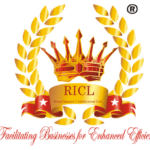
Food & Agriculture Testing
Food and agriculture testing are critical processes that ensure the safety, quality, and compliance of food products and agricultural commodities. These testing procedures encompass a wide range of analyses, from assessing the nutritional content of foods to detecting contaminants and verifying labeling claims. Let’s delve into some key aspects of food and agriculture testing:
Food and agriculture testing are critical processes that ensure the safety, quality, and compliance of food products and agricultural commodities. These testing procedures encompass a wide range of analyses, from assessing the nutritional content of foods to detecting contaminants and verifying labeling claims. Let’s delve into some key aspects of food and agriculture testing:
Food Safety Testing: This involves identifying and quantifying harmful substances such as pathogens (bacteria, viruses, parasites), toxins (like aflatoxins or pesticides), heavy metals, and chemical residues. Techniques like PCR (polymerase chain reaction), ELISA (enzyme-linked immunosorbent assay), and chromatography are commonly used for these tests. Food safety testing is crucial to prevent foodborne illnesses and ensure consumer health.
Quality Assurance: Food quality testing focuses on evaluating characteristics like taste, texture, appearance, and shelf-life. It includes sensory evaluations by trained panels, chemical analyses for freshness indicators (e.g., pH, acidity), and physical tests (e.g., texture analysis, color measurement). Quality assurance ensures that food products meet established standards and are enjoyable and safe to consume.
Nutritional Analysis: Determining the nutritional content of food is essential for labeling accuracy and helping consumers make informed dietary choices. Tests measure macronutrients (carbohydrates, proteins, fats), micronutrients (vitamins, minerals), calories, and other nutritional components. Advanced methods such as spectrophotometry, mass spectrometry, and nutritional databases are utilized for precise analyses.
Allergen Testing: With the rise in food allergies, detecting allergens like gluten, peanuts, dairy, and soy is crucial for food safety. Immunoassays and DNA-based techniques are employed to detect and quantify allergenic proteins accurately. Proper allergen labeling is vital to prevent allergic reactions in susceptible individuals.
GMO (Genetically Modified Organism) Testing: GMO testing verifies the presence and quantity of genetically modified ingredients in food and agricultural products. Polymerase chain reaction (PCR) and DNA sequencing are common methods used to detect specific DNA sequences indicative of genetic modification. GMO testing ensures regulatory compliance and transparency for consumers who prefer non-GMO products.
Pesticide and Residue Analysis: Agricultural products are tested for pesticide residues to ensure they comply with safety regulations. Techniques like gas chromatography (GC) and liquid chromatography (LC) coupled with mass spectrometry (MS) are used to detect and quantify pesticide residues accurately. Minimizing pesticide residues in food protects consumer health and environmental sustainability.
Water and Soil Testing: Agriculture also involves testing water and soil quality to assess factors like nutrient levels, pH, contaminants (e.g., heavy metals, pesticides), and microbial content. These tests help farmers optimize crop growth, ensure environmental sustainability, and meet regulatory standards for irrigation water and soil health.
Animal Feed Testing: Analyzing animal feed for nutritional content, contaminants (such as mycotoxins), and additives (like antibiotics or growth hormones) ensures animal health and the safety of animal-derived products. Techniques include proximate analysis for nutrients, ELISA for mycotoxins, and chromatography for drug residues.
Authentication and Traceability: Testing methods like DNA fingerprinting and isotope analysis are used to authenticate food products, ensuring they are genuine and not counterfeit or adulterated. Traceability systems, including barcode scanning and blockchain technology, help track food products from farm to fork, enhancing transparency and accountability in the supply chain.
Biological Testing: Microbiological testing is essential for monitoring microbial populations in food and agricultural products. It includes assessing the levels of beneficial microorganisms (probiotics) and harmful pathogens (e.g., Salmonella, E. coli) to maintain food safety and quality standards.
[formsapp id=”662f63f6c4dd546c9916c3db”]
